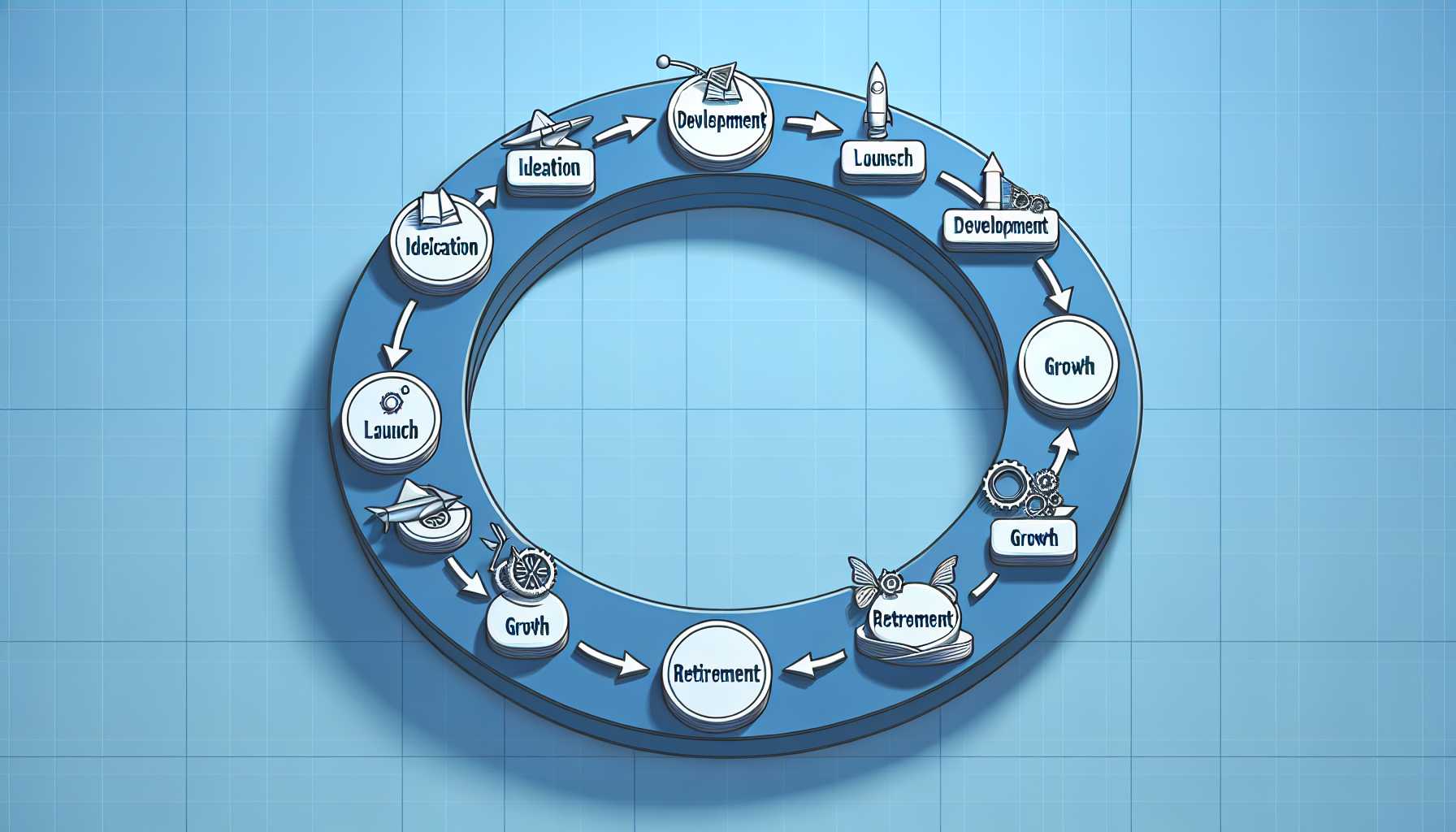Welcome back to our seasoned product managers’ corner, where we delve deep into the intricacies of product lifecycle management (PLM). Today, I draw upon my treasury of experiences to discuss best practices in ensuring our products glide through their lifecycle stages—ideation, development, launch, maturity, and retirement—with the grace and precision of a well-conducted symphony.
The Genesis: Ideation and Planning
PLM commences with ideation, a stage that demands rigorous market research, competitive analysis, and user need assessments. One framework that proved invaluable was the Jobs-To-Be-Done theory. It centers on the notion that customers ‘hire’ products to make progress in specific circumstances. Orchestrating brainstorming sessions through this lens ensures we create products that address concrete problems.
I recall initiating a product idea that germinated from observing user pain points. Using a User Story Mapping workshop, we outlined potential features and aligned them with business objectives. The outcome was a user-centric product roadmap that balanced feasibility, viability, and desirability elements.
R&D and Agile Development
Entering the dev cycle, our mantra was ‘fail fast, learn fast, iterate faster.’ Here, the integration of Agile methodologies and Scrum practices was critical. We broke the development into manageable sprints, which allowed for continual feedback and adaptation. A memorable learning was the integration of a dual-track Agile to simultaneously handle discovery and development, ensuring a non-stop learning process.
Effective lifecycle management in this stage also requires close collaboration with engineering teams to ensure technical feasibility. This was achieved using Design for X (DfX) principles, where X embodies manufacturability, usability, and other critical facets.
Go-To-Market Strategy and Execution
Launch planning is anything but a straight line. A robust go-to-market strategy must be agile enough to pivot as insights flood in. We once anticipated a particular market trend but found, through rapid prototyping and user testing, that we had to tweak our value proposition. Utilizing the Lean Canvas was transformational in crystallizing the business model and value proposition in such dynamic scenarios.
Additionally, the creation of cross-functional launch teams fostered accountability and ensured diverse perspectives were incorporated into the product’s market entry strategy.
Nurturing Maturity and Handling Plateaus
When products reach maturity, it’s tempting to ease off the innovation pedal. A key learning here was to implement a Balanced Scorecard approach. Focused on financial, customer, internal process, and learning and growth perspectives, this tool was instrumental in identifying new growth levers when product sales plateaued.
In one case, we utilized ‘growth hacking’ tactics to rejuvenate a product’s lifecycle. By tweaking the pricing strategies and adopting a freemium model, we prolonged the maturity phase and unlocked new user segments.
The Artful Exit: Sunset and Retirement
Endings, as delicate as they are, should not be shunned. A structured approach to product sunset, grounded in Data-driven Analysis, can mitigate backlash and maintain brand integrity. We learned to communicate proactively with stakeholders and to provide clear transition paths for our users.
One particular success was when we managed to repurpose the technology of a retiring product into a new offering, thus concurrently sunsetting a product and birthing another—highlighting the cyclical nature of innovation.
Encapsulating the Journey: Continuous Improvement and Tools
End-to-end lifecycle management is a continuous learning process. Tools such as PLM software and Product Roadmapping tools are indispensable for maintaining oversight and fostering communication. Another game-changer was embracing KPIs focused on lifecycle stages to steer our decision-making towards data-oriented strategies.
To sum up, managing a product’s lifecycle demand foresight, agility, and an understanding of the market’s rhythms. In my journey, stitching together a tapestry of frameworks and methodologies that span across market understanding, agile development, strategic launch tactics, and data-driven retirement decisions has been fundamental to orchestrating successful product lifecycles.
What have been your experiences or learning moments that shaped your approach to PLM? Share your stories in the comments below and let’s continue mastering the art of product lifecycle together.

